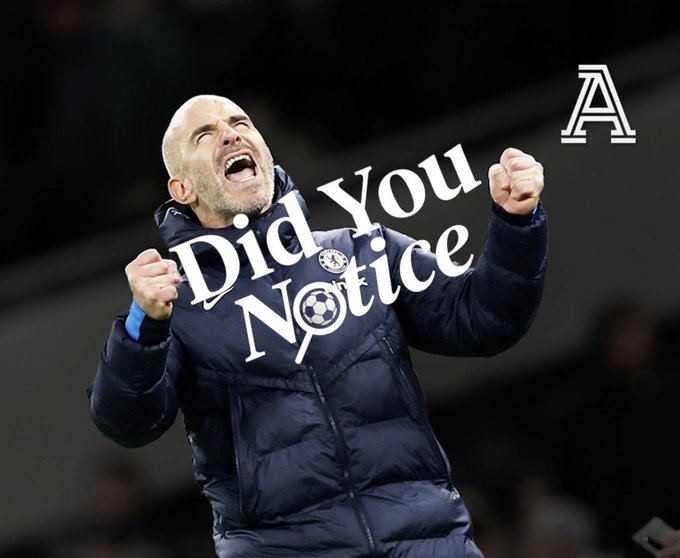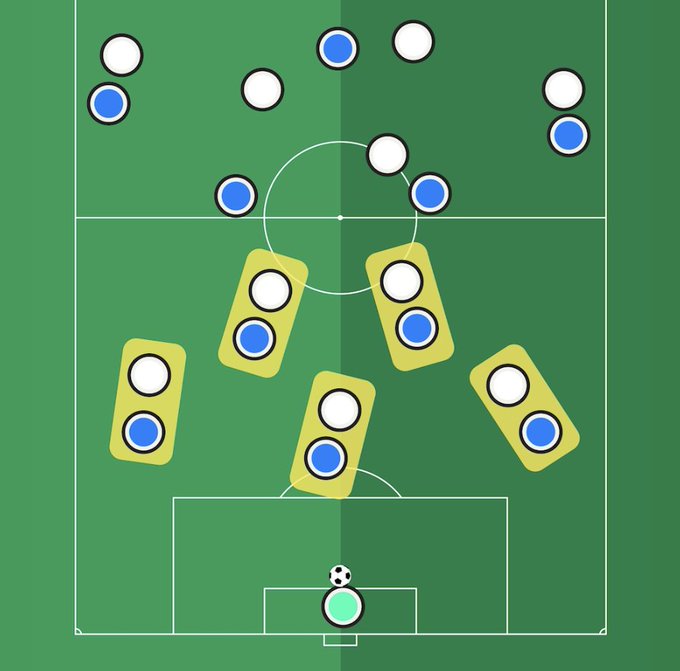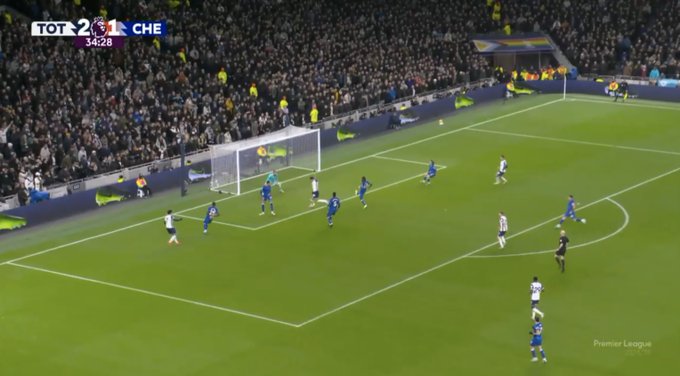
Jon Mackenzie
@Jon_Mackenzie
It's Monday. And on Mondays, we notice. Today, we get to notice the impact that Enzo Maresca has been having at Chelsea which resulted in a 4-2 win from a 2-0 deficit vs Spurs yesterday... [thread]
But rather than focusing on the obvious topic here - 'How did Maresca's tactical changes at half time influence the game?' - I'm aware that I've already done some noticing on a similar situation which you can read here: https://x.com/Jon_Mackenzie/st...
And for the specifics of how the half time switches changed things up in possession in this game, why not check out @ConnorHolden00's video on the topic which you can find here: https://youtu.be/YxicmagM7AU?s...
Instead, I'm going to focus on a topic which has almost gone under the radar a bit but which I think actually coloured the whole tactical context of the game: Spurs high press.
But first: some context. This season, Chelsea have generally set up with a box midfield in possession that looks something like this:
However, they tend to defend in a different shape so they have to arrive at the box midfield in a different way. They have lots of different options for this and the half time shift actually involved a different way of forming the box.
Against Spurs, they started out using Moises Caicedo as a right back out of possession… But he would move inside whenever they had the ball:
In most build-up moments, then, Caicedo was already inside which played into the hands of the Spurs pressing structure to some extent: because Spurs press out of a 433/4141 shape, they were able to match Chelsea player-to-player with their high press.
Now, obviously, even with this man-to-man setup, Chelsea still have the extra man in build up because they have Rob Sanchez, the goalkeeper, available as a +1...
The problem was that Spurs were pressing Chelsea so aggressively that Sanchez' technical flaws were being shown up a bit.
In fact, Spurs' best chance (per xG) came from a sequence where Sanchez was pressed into a mistake:
Perhaps unsurprisingly, Spurs' first two goals came through Chelsea mistakes in build-up, and although Marc Cucurella was unlucky to lose his footing both times, because Spurs were pressing so aggressively, they were well-positioned to benefit from these slip ups.
In the end, Tottenham created most of their expected goals in open play through the high press.
Which raises the question why Maresca was happy to allow his build-up unit to be put under pressure for so long in the game? But of course, the answer is always: because tactical approaches are always about trade offs.
If Spurs were pressing man-to-man at the front, it meant that they were also defending man-to-man at the back.
Because Spurs were so aggressive with their high press, it meant that if Chelsea could break the press or play over it, they were often in very nice attacking scenarios with 1v1 matchups over the pitch.
This is a nice example of a tactical trade off that probably didn't play out in Maresca's favour as they ended up creating less open play xG than Spurs (albeit with Spurs only putting up 0.7 xG from their build up, but that's another story).
After Chelsea drew level at 2-2, then, Maresca decided to change things up. By this point, Marc Cucurella was being used as an inverted full back but jumping up into the 10 slot. Rather than pushing him up in deeper build-up, Maresca decided to keep him in the back line.
This now meant that Chelsea technically had a +2 advantage in build up against the Spurs 5-men pressing unit, which reduced the pressure that Chelsea were under as they worked the ball from the back.
Most importantly, though, it neutralised Spurs' most potent attacking threat in open play: their press.
And maybe there is a deeper tactical point to take away here: there's been a lot of discussion about Ange Postecoglou's seeming lack of tactical flexibility. This is even more pronounced in a game where they had a 2-0 lead largely gifted to them and they still went on to lose.
I'm not here to run through the old debates or lecture you, but it's telling that after drawing level, Maresca made an effectively more conservative choice in opting to solid up his team's build-up but still went on to win.
Perhaps the lesson here, then, is that you can make tactical changes that on paper reduce your attacking threat (dropping a player from higher up the pitch in build-up) without it hugely curtailing your overall tactical philosophy.
At 2-0 up, Postecoglou could arguably have used his press less aggressively. Would it have affected his team's attacking potential? Undoubtedly. As we've seen, the press was their most dangerous attacking tool in open play.
But at 2-0 up, the priority should probably have been stopping the opponent from scoring rather than staying as potent from an attacking point of view.
These are the tactical trade offs that managers have to face week in week out. Postecoglou is free to manage the trade offs as he sees fit (and who am I to suggest otherwise). But on the basis of the two managers on the pitch, the one with flexible solutions was the one who won.
If you prefer videos, you're in with some luck! YT: https://youtube.com/shorts/1Ta... tt: @theathleticfc/video/7446465756801355040?is_from_webapp=1&sender_device=pc&web_id=7384610459468793376 class="text-blue-500 hover:underline" target="_blank" rel="noopener noreferrer">https://www.tiktok.com/@theath... Insta (coming soon): https://www.instagram.com/thea...
These videos are colloborative projects. Thanks to Jamie Stewart for filming and producing, and @CPHamill, @EuroExpert_ , @ReubenPinder and @donmafilms for their help in the ideation and production process.

















